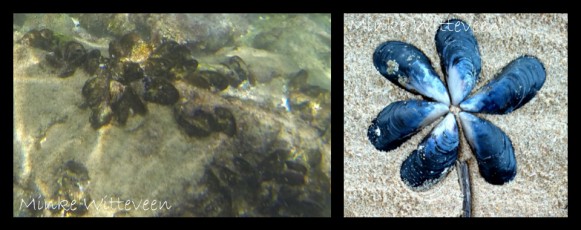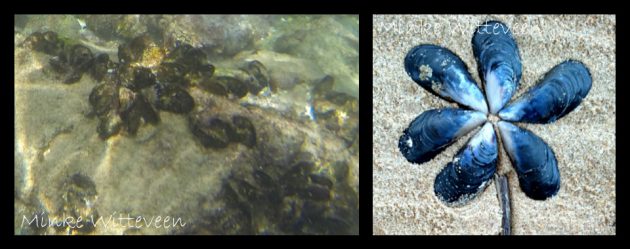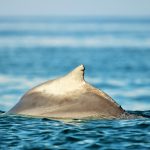Mussel is the common term for a variety of fresh and salt water clams or bivalve molluscs. Bivalves, as the name may suggest, are enclosed by two shell halves, and mussels are no different. Most of the species to which the term mussel applies have shells where the length is longer than the width giving them an asymmetrical wedge-shape. The two shell halves are held together by an elastic ligament at the base of the shell, which also extends along the side of the animal’s body. When the two halves of the shell are clamped together, the elastic ligament stretches, and when the animal relaxes it shortens and pulls the two shells apart. Mussels have very limited mobility and attach themselves to the rock by a cement-like substance, or by a ‘beard’ of byssal threads. Mussels are filter-feeders and filter water brought in through an inhalant siphon through large sheet-like gills and expel waste water through an exhalant siphon.Plettenberg Bay is home to a number of different species of mussels, but the endemic black musselChoromytilus meridionalis found only along the southern African coast from central Namibia to Port Elizabeth is perhaps one of the more well known. Another species of mussel found in southern Africa is the Mediterranean mussel Mytilus galloprovincialis which is an invasive species in this area. The two species are very similar in appearance and are often confused. The black mussel has a smooth, shiny black shell which wears away to blue at the base. In comparison, the Mediterranean mussel is shorter and wider than the black mussel, and has a much lighter outer shell. The black mussel can grow to a length of 15 cm while the Mediterranean mussel grows to between 6 and 14 cm. Unfortunately, the alien Mediterranean mussel outcompetes our endemic black mussel as it has a faster growth rate, greater reproductive output, and is more able to withstand drying out in the hot sun. Despite their negative impact on the natural mussel community, African black oystercatchers Haematopus moquini have increased in number due to an increased food supply that the Meditteranean mussel represents.
Written by: Minke Witteveen
For further reading:
- Branch, G.M., Griffiths, C.L., Branch, M.L. and Beckley, L.E. 2010. Two Oceans: A guide to the marine life of southern Africa. Pp. 146. Random House Struik Publishers, Cape Town.




